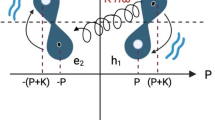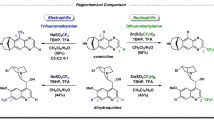Abstract
Two types of polarization that can occur by bond formation are: (i) the result of concentration of charge due to the overlap of atomic orbitals; and (ii) the actual polarization of the basis orbitals. Mulliken1 has described this second type of polarization and its effect as a function of the overlap integral for certain diatomic molecules. In all cases it was observed that the addition of a given amount of a 2p Slater type orbital (STO) into a hybrid orbital produced the largest change in the overlap if the hybrid orbital was a 2s STO. This observation led to the well-known phrase “A little hybridization goes a long way”. The lowering of the energy of the system due to the increase in the overlap integral must be larger than the increase in energy incurred by the inclusion of the higher energy 2p STO if the polarization is to be useful. We are inclined to reserve the word ‘polarization’ for this type of hybridization for the following reasons: (a) the process described displaces the centroid of the electronic charge distribution from the nucleus; (b) this concept can be readily extended to polyatomic molecules and is not dependent on the ‘localized bond’ approximation (this will prove particularly useful for molecules containing lone-pair electrons); (c) it distinguishes this type of hybridization from the hybrid orbitals obtained from molecular orbitals by a unitary transformation.
This is a preview of subscription content, access via your institution
Access options
Subscribe to this journal
Receive 51 print issues and online access
$199.00 per year
only $3.90 per issue
Buy this article
- Purchase on Springer Link
- Instant access to full article PDF
Prices may be subject to local taxes which are calculated during checkout
Similar content being viewed by others
References
Mulliken, R. S., J. Chem. Phys., 19, 900 (1951).
Nyholm, R. S., and Gillespie, R. J., Quart. Rev., 11, 339 (1957).
Ellison, F. O., and Shull, H., J. Chem. Phys., 23, 2348 (1955).
Bader, R. F. W., and Jones, G. A., J. Chem. Phys., 38, 2791 (1963).
Bader, R. F. W., and Jones, G. A., Canad. J. Chem., 41, 586 (1963).
Bader, R. F. W., and Jones, G. A., Canad. J. Chem., 41, 2251 (1963).
Pople, J. A., and Duncan, A. B. F., Trans. Faraday Soc., 49, 217 (1953).
Peters, D., J. Chem. Soc., 2003 (1963).
Maccoll, A., Trans. Faraday Soc., 46, 369 (1950).
Bader, R. F. W., J. Amer. Chem. Soc., 86, 5070 (1964).
Claxton, T. A., Leicester Chem. Rev., 6, 31 (1964).
Author information
Authors and Affiliations
Rights and permissions
About this article
Cite this article
CLAXTON, T. Polarization and Hybridization. Nature 208, 891–892 (1965). https://doi.org/10.1038/208891a0
Issue Date:
DOI: https://doi.org/10.1038/208891a0
Comments
By submitting a comment you agree to abide by our Terms and Community Guidelines. If you find something abusive or that does not comply with our terms or guidelines please flag it as inappropriate.



